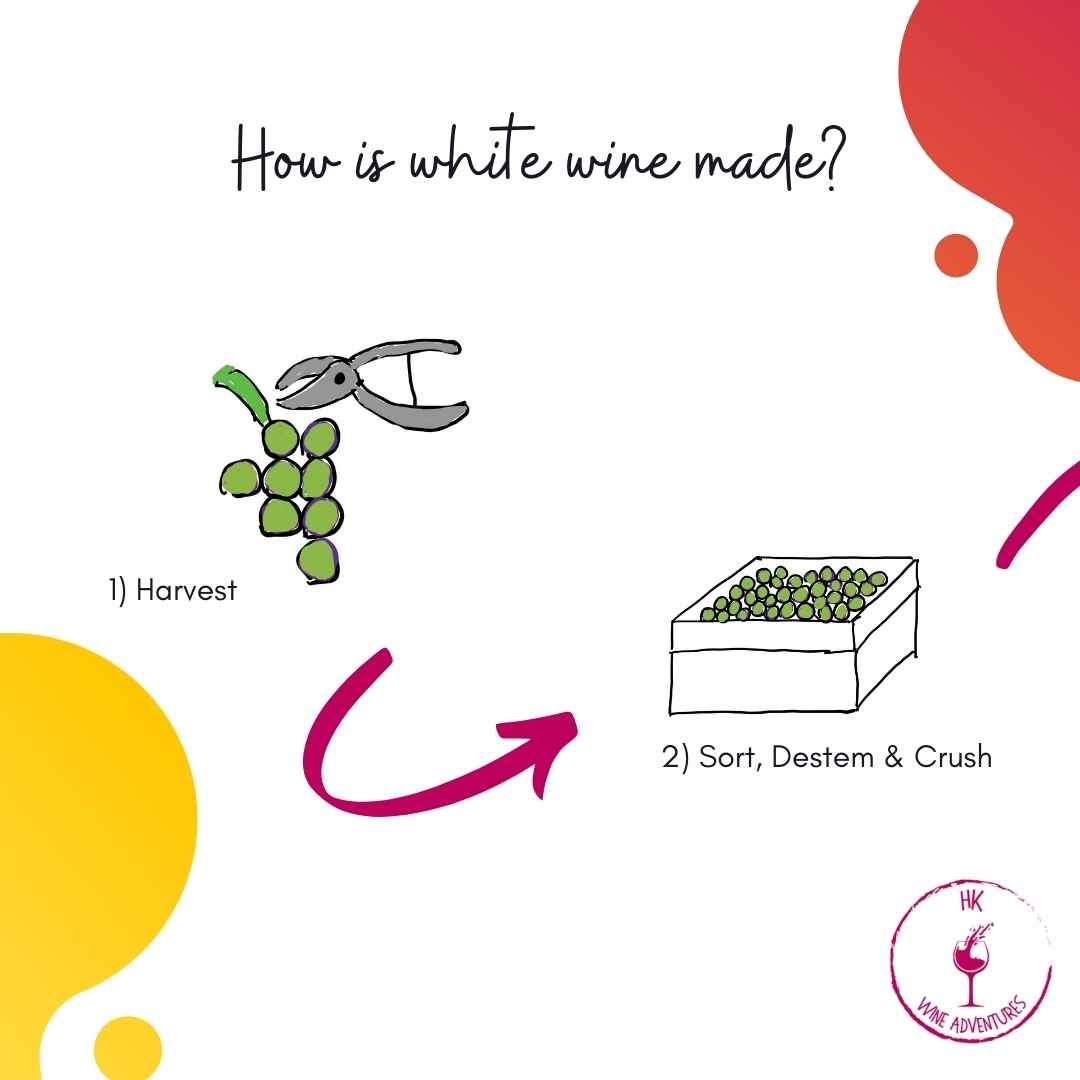White Wine - An Introduction
White wine is usually made with pale-skinned grapes but it can also be made from dark skinned grapes. To do this, they remove the dark skins at the beginning of the wine making process. An example of this would be a blanc de noir Champagne. Yet, you cannot make red white from pale-skinned grapes.
How is white wine made?
Here is an overview of the white wine making process:
The key differences between white wine and red wine production are:
1) The skins and stems are removed at the beginning in the white wine process
2) The fermentation is cooler to preserve the flavours
Which grapes are used to make white wine?
There are many types of grape used to produce white wine. The most common are Sauvignon Blanc, Chardonnay, Riesling, Chenin Blanc and Pinot Grigio.
What are the key characteristics?
There is a scale of aromatic and non-aromatic grapes. Aromatic grapes have more floral and fruity compounds due to a compound called terpene. Examples of aromatic grapes include Sauvignon Blanc and Riesling. Non-aromatic grapes, such as Chardonnay and Pinot Gris, are more reliant on the winemaking process to produce the aromas.
Chardonnay - The Big Divide
Chardonnay is divisive - a lot of people claim to hate it. But did you know it comes in a range of styles?
The main styles are:
1) Sparkling wine such as a part of a Champagne blend or on its own in a Blanc de Blanc.
2) Big, buttery, oaky chardonnay. This is often associated with Napa. The flavours come from the oak and malolactic fermentation.
3) Light, citrusy chardonnay. This is more delicate and fruit forward. There will be no oak in the winemaking process. An example of this is Chablis.
What is your favourite white wine?



